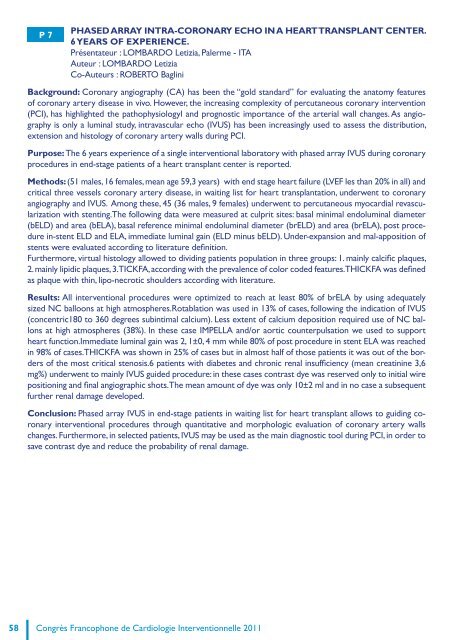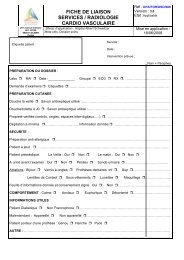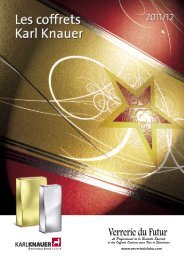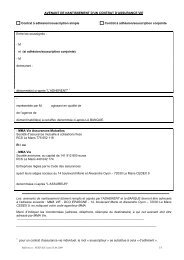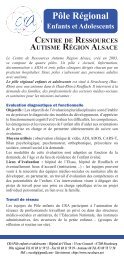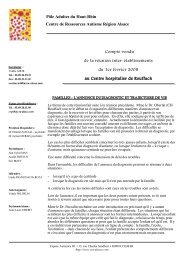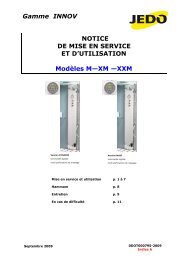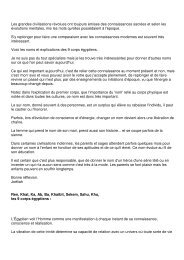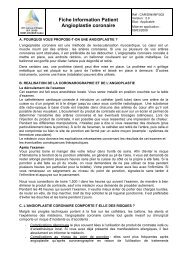Francophone - Webagoo.eu
Francophone - Webagoo.eu
Francophone - Webagoo.eu
Create successful ePaper yourself
Turn your PDF publications into a flip-book with our unique Google optimized e-Paper software.
P 7<br />
PHASED ARRAY INTRA-CORONARY ECHO IN A HEART TRANSPLANT CENTER.<br />
6 YEARS OF EXPERIENCE.<br />
Présentat<strong>eu</strong>r : LOMBARDO Letizia, Palerme - ITA<br />
Aut<strong>eu</strong>r : LOMBARDO Letizia<br />
Co-Aut<strong>eu</strong>rs : ROBERTO Baglini<br />
Background: Coronary angiography (CA) has been the “gold standard” for evaluating the anatomy features<br />
of coronary artery disease in vivo. However, the increasing complexity of percutaneous coronary intervention<br />
(PCI), has highlighted the pathophysiologyl and prognostic importance of the arterial wall changes. As angiography<br />
is only a luminal study, intravascular echo (IVUS) has been increasingly used to assess the distribution,<br />
extension and histology of coronary artery walls during PCI.<br />
Purpose: The 6 years experience of a single interventional laboratory with phased array IVUS during coronary<br />
procedures in end-stage patients of a heart transplant center is reported.<br />
Methods: (51 males, 16 females, mean age 59,3 years) with end stage heart failure (LVEF les than 20% in all) and<br />
critical three vessels coronary artery disease, in waiting list for heart transplantation, underwent to coronary<br />
angiography and IVUS. Among these, 45 (36 males, 9 females) underwent to percutaneous myocardial revascularization<br />
with stenting.The following data were measured at culprit sites: basal minimal endoluminal diameter<br />
(bELD) and area (bELA), basal reference minimal endoluminal diameter (brELD) and area (brELA), post procedure<br />
in-stent ELD and ELA, immediate luminal gain (ELD minus bELD). Under-expansion and mal-apposition of<br />
stents were evaluated according to literature definition.<br />
Furthermore, virtual histology allowed to dividing patients population in three groups: 1. mainly calcific plaques,<br />
2. mainly lipidic plaques, 3. TICKFA, according with the prevalence of color coded features. THICKFA was defined<br />
as plaque with thin, lipo-necrotic shoulders according with literature.<br />
Results: All interventional procedures were optimized to reach at least 80% of brELA by using adequately<br />
sized NC balloons at high atmospheres.Rotablation was used in 13% of cases, following the indication of IVUS<br />
(concentric180 to 360 degrees subintimal calcium). Less extent of calcium deposition required use of NC ballons<br />
at high atmospheres (38%). In these case IMPELLA and/or aortic counterpulsation we used to support<br />
heart function.Immediate luminal gain was 2, 1±0, 4 mm while 80% of post procedure in stent ELA was reached<br />
in 98% of cases.THICKFA was shown in 25% of cases but in almost half of those patients it was out of the borders<br />
of the most critical stenosis.6 patients with diabetes and chronic renal insufficiency (mean creatinine 3,6<br />
mg%) underwent to mainly IVUS guided procedure: in these cases contrast dye was reserved only to initial wire<br />
positioning and final angiographic shots. The mean amount of dye was only 10±2 ml and in no case a subsequent<br />
further renal damage developed.<br />
Conclusion: Phased array IVUS in end-stage patients in waiting list for heart transplant allows to guiding coronary<br />
interventional procedures through quantitative and morphologic evaluation of coronary artery walls<br />
changes. Furthermore, in selected patients, IVUS may be used as the main diagnostic tool during PCI, in order to<br />
save contrast dye and reduce the probability of renal damage.<br />
58 Congrès <strong>Francophone</strong> de Cardiologie Interventionnelle 2011


